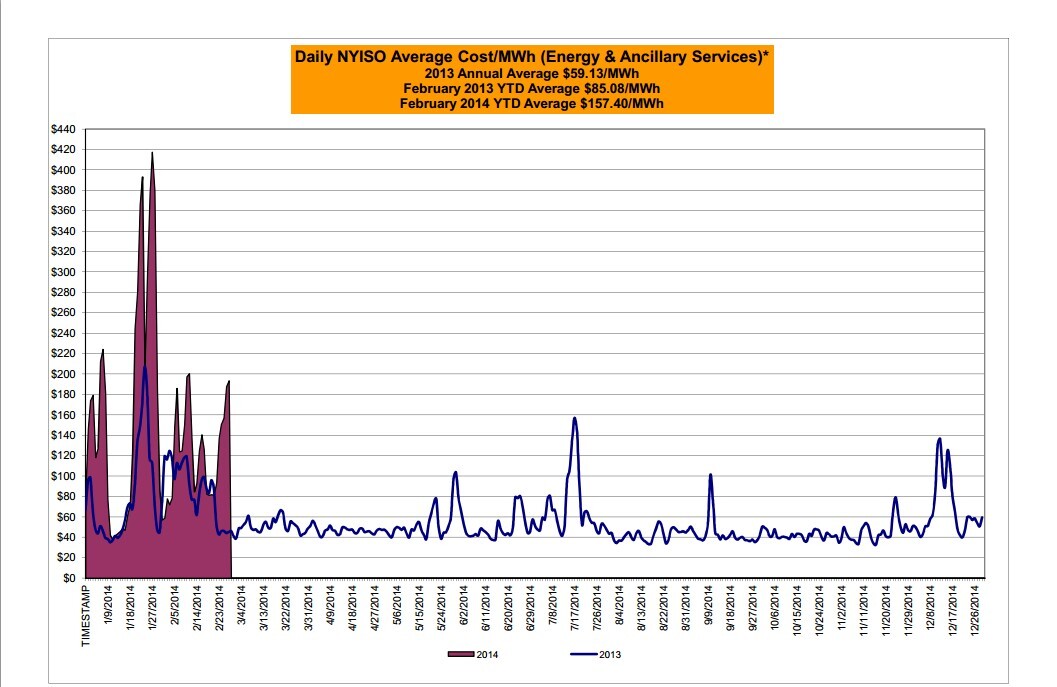The Winter of 2014 may come to be known as a watershed for power markets. Between the Polar Vortex and fuel shortages (in part due to power plant fuel switching from coal to natural gas), this Winter (January, February and even March) resulted in unprecedented high power pricing up and down the East Coast.
Why was it so significant?
1. The market hit all time high prices, both in index (spot) markets and in forward markets. Take a look at the NY Independent System Operator’s day ahead price chart for January and February (which compares 2013 and 2014).

2. New York is traditionally a summer peaking system, which means that historically demand and costs peak during the high temperature periods in the summer. Air conditioning demand usually drives these usage and cost peaks. Not so this year– we may find that the Northeast has become summer peaking in terms of demand, but with costs peaking in the Winter.
3. Disruptions to traditional market dynamics can be significant—the new price signals will change where and when investments are made in energy infrastructure.
4. Disruptions to the what-used-to-be-usual market cost patterns should alter and inform how businesses manage risk, cost exposure, budgeting and purchasing.
In prior blog posts we’ve touched on what may have caused the winter price spike.
Now, the question is, with the wisdom of hindsight, what should you do differently in the future?
Get information, and expect to get it quickly. In this day and age, your supplier should be communicating with you swiftly to inform you of any major unforeseen changes to markets that will affect your bill. Do not settle for re-active information.
Get a forward looking view. Don’t settle for a dashboard look-back at what has already happened. Make sure you get insight into the next 12 to 24 months of market cost information for your budget forecasts.
Yes, there were some surprises this Winter. No one expected index electricity prices to skyrocket in the way that they did. The spikes were unforeseen, even after the price run-up in the previous winter. Some of our customers, who want to control budget costs and were warned against having exposure to index pricing during the Winter months, did not act and felt the impact of these price spikes. If you are on an index contract, you should expect to be warned about these cost impacts before you get an invoice.
If you aren’t hearing from your supplier, broker or consultant, you need to ask them why they haven’t communicated and what their plan is for you and your business.
Finally, there is no such thing as a one-size fits all plan. If you are a business that traditionally doesn’t like to fix your costs, then it might be time to think differently. You wouldn’t finance a household purchase the same way no matter where interest rates were, would you? You should make sure your goals and strategy fit your business need AND are consistent with market signals.
Bottom line for businesses: Hold your energy company, consultant, broker accountable for communicating clearly. Make sure you get a forward looking view, and don’t expect last year’s strategy to work in this year’s market.

